Chin-Lin Chen0471756873, 9780471756873
This text offers an in-depth treatment of integrated and fiber optics, providing graduate students, engineers, and scientists with a solid foundation of the principles, capabilities, uses, and limitations of guided-wave optic devices and systems. In addition to the transmission properties of dielectric waveguides and optical fibers, this book covers the principles of directional couplers, guided-wave gratings, arrayed-waveguide gratings, and fiber optic polarization components.
The material is fully classroom-tested and carefully structured to help readers grasp concepts quickly and apply their knowledge to solving problems. Following an overview, including important nomenclature and notations, the text investigates three major topics: Integrated optics Fiber optics Pulse evolution and broadening in optical waveguides
Each chapter starts with basic principles and gradually builds to more advanced concepts and applications. Compelling reasons for including each topic are given, detailed explanations of each concept are provided, and steps for each derivation are carefully set forth. Readers learn how to solve complex problems using physical concepts and simplified mathematics.
Illustrations throughout the text aid in understanding key concepts, while problems at the end of each chapter test the readers’ grasp of the material.
The author has designed the text for upper-level undergraduates, graduate students in physics and electrical and computer engineering, and scientists. Each chapter is self-contained, enabling instructors to choose a subset of topics to match their particular course needs. Researchers and practitioners can also use the text as a self-study guide to gain a better understanding of photonic and fiber optic devices and systems.
Table of contents :
FOUNDATIONS FOR GUIDED-WAVE OPTICS……Page 3
CONTENTS……Page 7
PREFACE……Page 19
1.1 Introduction……Page 21
1.2 Maxwell’s Equations……Page 24
1.3 Uniform Plane Waves in Isotropic Media……Page 26
1.4 State of Polarization……Page 27
1.5 Reflection and Refraction by a Planar Boundary between Two Dielectric Media……Page 31
1.5.1 Perpendicular Polarization……Page 32
1.5.2 Parallel Polarization……Page 37
1.6 Guided Waves……Page 39
1.6.2 Transverse Magnetic Modes……Page 41
Problems……Page 42
References……Page 43
2.1 Introduction……Page 45
2.2 Dispersion of Step-Index Waveguides……Page 47
2.2.1 Transverse Electric Modes……Page 49
2.2.2 Transverse Magnetic Modes……Page 51
2.3.1 The a, b, c, d, and V Parameters……Page 52
2.3.2 The bV Diagram……Page 53
2.3.3 Cutoff Thicknesses and Cutoff Frequencies……Page 55
2.3.4 Number of Guided Modes……Page 56
2.3.5 Birefringence in Thin-Film Waveguides……Page 57
2.4.1 Transverse Electric Modes……Page 58
2.4.2 Transverse Magnetic Modes……Page 60
2.6.1 Time-Average Power Transported by TE Modes……Page 61
2.6.2 Confinement Factor of TE Modes……Page 64
2.6.3 Time-Average Power Transported by TM Modes……Page 65
2.7 Phase and Group Velocities……Page 67
Problems……Page 68
Bibliography……Page 69
3.1 Introduction……Page 71
3.2 Transverse Electric Modes Guided by Linearly Graded Dielectric Waveguides……Page 72
3.3.1 Transverse Electric Modes……Page 77
3.3.2 Transverse Magnetic Modes……Page 79
3.4 The WKB Method……Page 81
3.4.1 Auxiliary Function……Page 82
3.4.2 Fields in the R Zone……Page 83
3.4.3 Fields in the L Zone……Page 84
3.4.4 Fields in the Transition Zone……Page 85
3.4.5 The Constants……Page 87
3.4.7 An Example……Page 88
3.5 Hocker and Burns’ Numerical Method……Page 90
3.5.1 Transverse Electric Modes……Page 92
3.6 Step-Index Thin-Film Waveguides versus Graded-Index Dielectric Waveguides……Page 94
Problems……Page 95
References……Page 96
4.1 Introduction……Page 97
4.2 Complex Relative Dielectric Constant and Complex Refractive Index……Page 98
4.3.1 Waveguides Having Weakly Absorbing Materials……Page 100
4.3.2 Metal-Clad Waveguides……Page 102
4.4 Attenuation in Thick Waveguides with Step-Index Profiles……Page 105
4.5 Loss in TM(0) Mode……Page 108
References……Page 110
5.1 Introduction……Page 113
5.2 Fields and Modes Guided by Rectangular Waveguides……Page 115
5.3 Orders of Magnitude of Fields……Page 116
5.3.1 The E(y) Modes……Page 117
5.3.2 The E(x) Modes……Page 119
5.4.1 The E(y) Modes……Page 120
5.4.3 Discussions……Page 126
5.4.4 Generalized Guide Index……Page 127
5.5 Effective Index Method……Page 129
5.5.1 A Pseudowaveguide……Page 132
5.5.2 Alternate Pseudowaveguide……Page 133
5.5.3 Generalized Guide Index……Page 134
5.6 Comparison of Methods……Page 135
Problems……Page 139
References……Page 140
6.1 Introduction……Page 141
6.2 Qualitative Description of the Operation of Directional Couplers……Page 142
6.3 Marcatili’s Improved Coupled-Mode Equations……Page 144
6.3.1 Fields of Isolated Waveguides……Page 145
6.3.3 Marcatili Relation……Page 146
6.3.4 Approximate Normal Mode Fields……Page 148
6.3.5 Improved Coupled-Mode Equations……Page 149
6.3.6 Coupled-Mode Equations in an Equivalent Form……Page 150
6.3.7 Coupled-Mode Equations in an Alternate Form……Page 151
6.4.1 Transfer Matrix……Page 152
6.4.2 Essential Characteristics of Couplers with κ(1) = κ(2) = κ……Page 154
6.4.3 3-dB Directional Couplers……Page 155
6.4.4 Directional Couplers as Electrically Controlled Optical Switches……Page 156
6.4.5 Switching Diagram……Page 159
6.5 Switched Couplers……Page 161
6.6 Directional Couplers as Optical Filters……Page 164
6.6.1 Directional Coupler Filters with Identical Waveguides and Uniform Spacing……Page 166
6.6.2 Directional Coupler Filters with Nonidentical Waveguides and Uniform Spacing……Page 168
6.6.3 Tapered Directional Coupler Filters……Page 171
6.7 Intensity Modulators Based on Directional Couplers……Page 173
6.7.1 Electrooptic Properties of Lithium Niobate……Page 174
6.7.2 Dielectric Waveguide with an Electrooptic Layer……Page 175
6.7.3 Directional Coupler Modulator Built on a Z-Cut LiNbO(3) Plate……Page 176
6.8 Normal Mode Theory of Directional Couplers with Two Waveguides……Page 179
6.9 Normal Mode Theory of Directional Couplers with Three or More Waveguides……Page 181
Problems……Page 184
References……Page 185
7.1.1 Types of Guided-Wave Gratings……Page 189
7.1.2 Applications of Guided-Wave Gratings……Page 192
7.2.1 Waveguide Perturbation……Page 194
7.2.2 Fields of Perturbed Waveguide……Page 196
7.2.3 Coupled Mode Equations and Coupling Coefficients……Page 198
7.2.4 Co-directional Coupling……Page 200
7.3 Coupling Coefficients of a Rectangular Grating—An Example……Page 201
7.4 Graphical Representation of Grating Equation……Page 205
7.5.1 Coupled-Mode Equations……Page 207
7.5.2 Filter Response of Grating Reflectors……Page 209
7.5.3 Bandwidth of Grating Reflectors……Page 213
7.6.1 Coupled-Mode Equations with Optical Gain……Page 214
7.6.3 Eigenvalue Equations……Page 215
7.6.5 Oscillation Frequency and Threshold Gain……Page 219
References……Page 222
8.1 Introduction……Page 227
8.2 Arrays of Isotropic Radiators……Page 228
8.3.1 Arrayed-Waveguide Gratings as Dispersive Components……Page 232
8.4 1 × 2 Arrayed-Waveguide Grating Multiplexers and Demultiplexers……Page 234
8.4.1 Waveguide Grating Elements……Page 235
8.4.3 Spectral Response……Page 237
8.5 N × N Arrayed-Waveguide Grating Multiplexers and Demultiplexers……Page 239
8.6 Applications in WDM Communications……Page 241
References……Page 242
9.1 Introduction……Page 245
9.2.1 Electromagnetic Fields……Page 247
9.2.2 Characteristic Equation……Page 250
9.2.3 Traditional Mode Designation and Fields……Page 251
9.3 Linearly Polarized Modes Guided by Weakly Guiding Step-Index Fibers……Page 255
9.3.1 Basic Properties of Fields of Weakly Guiding Fibers……Page 256
9.3.2 Fields and Boundary Conditions……Page 258
9.3.3 Characteristic Equation and Mode Designation……Page 259
9.3.5 Time-Average Power……Page 264
9.3.6 Single-Mode Operation……Page 266
9.4 Phase Velocity, Group Velocity, and Dispersion of Linearly Polarized Modes……Page 267
9.4.1 Phase Velocity and Group Velocity……Page 268
9.4.2 Dispersion……Page 269
Problems……Page 275
References……Page 276
10.1 Introduction……Page 279
10.2.1 Radiated Fields in the Fraunhofer Zone……Page 280
10.2.2 Radiation by a Gaussian Aperture Field……Page 285
10.2.3 Experimental Determination of ka and V……Page 286
10.3.1 Power Coupled to LP Mode……Page 289
10.3.2 Gaussian Beam Excitation……Page 291
References……Page 293
11.1 Introduction……Page 295
11.2 Geometrical Birefringence of Single-Mode Fibers……Page 298
11.3 Birefringence Due to Built-In Stress……Page 302
11.4.1 Lateral Stress……Page 305
11.4.2 Bending……Page 309
11.4.3 Mechanical Twisting……Page 313
11.5.2 Strong Axial Magnetic Fields……Page 314
11.6 Jones Matrices for Birefringent Fibers……Page 316
11.6.2 Linearly Birefringent Fibers with a Continuous Rotating Axis……Page 317
11.6.4 Linearly and Circularly Birefringent Fibers……Page 320
11.6.5 Fibers with Linear and Circular Birefringence and Axis Rotation……Page 323
References……Page 326
12.1 Introduction……Page 329
12.2.1 Kurtz and Striefer’s Theory of Waves Guided by Inhomogeneous Media……Page 331
12.2.2 Fields and Dispersion of LP Modes……Page 332
12.2.3 Cutoff of Higher-Order LP Modes……Page 335
12.3.2 Normalized Group Delay d(V b)/dV……Page 338
12.3.3 Group Delay and the Confinement Factor……Page 340
12.3.4 Normalized Waveguide Dispersion V [d(2)(V b)/dV (2)]……Page 341
12.3.5 An Example……Page 342
12.4.1 Radiation of Fundamental Modes of Graded-Index Fibers……Page 344
12.4.2 Excitation by a Linearly Polarized Gaussian Beam……Page 345
12.5 Mode Field Radius……Page 347
12.5.1 Marcuse Mode Field Radius……Page 349
12.5.2 First Petermann Mode Field Radius……Page 350
12.5.3 Second Petermann Mode Field Radius……Page 351
12.6 Mode Field Radius and Key Propagation and Dispersion Parameters……Page 352
References……Page 354
13.1 Introduction……Page 357
13.2 Dispersion and Group Velocity Dispersion……Page 360
13.3 Fourier Transform Method……Page 363
13.4 Propagation of Gaussian Pulses in Waveguides……Page 365
13.4.1 Effects of the First-Order Group Velocity Dispersion……Page 367
13.4.2 Effects of the Second-Order Group Velocity Dispersion……Page 369
13.5 Impulse Response……Page 372
13.5.1 Approximate Impulse Response Function with ”’ Ignored……Page 374
13.5.2 Approximate Impulse Response Function with ” Ignored……Page 375
13.6 Propagation of Rectangular Pulses in Waveguides……Page 376
13.7 Evolution of Pulse Envelope……Page 377
13.7.1 Monochromatic Waves……Page 380
13.7.2 Envelope Equation……Page 381
13.7.4 Effect of the First-Order Group Velocity Dispersion……Page 383
13.8 Dispersion Compensation……Page 386
References……Page 388
14.1 Introduction……Page 391
14.2 Optical Kerr Effect in Isotropic Media……Page 392
14.2.1 Electric Susceptibility Tensor……Page 393
14.2.2 Intensity-Dependent Refractive Index……Page 394
14.3.1 Linear and Third-Order Polarizations……Page 396
14.3.2 Nonlinear Envelope Equation in Nonlinear Media……Page 398
14.3.3 Self-Phase Modulation……Page 399
14.3.4 Nonlinear Envelope Equation for Nonlinear Fibers……Page 400
14.3.5 Nonlinear Schrödinger Equation……Page 401
14.4 Qualitative Description of Solitons……Page 402
14.5.1 Canonical Expression……Page 405
14.5.2 General Expression……Page 406
14.5.4 Basic Soliton Properties……Page 407
14.6.1 Second-Order Solitons……Page 409
14.6.2 Third-Order Solitons……Page 410
14.7 Generation of Solitons……Page 411
14.7.2 Noninteger A……Page 413
14.8 Soliton Units of Time, Distance, and Power……Page 415
14.9 Interaction of Solitons……Page 418
References……Page 422
Bibliography……Page 423
A BROWN IDENTITY……Page 425
A.1 Wave Equations for Inhomogeneous Media……Page 426
A.2 Brown Identity……Page 427
A.4 Effect of Material Dispersion……Page 430
References……Page 431
B TWO-DIMENSIONAL DIVERGENCE THEOREM AND GREEN’S THEOREM……Page 433
Reference……Page 435
C.1 Lorentz Reciprocity……Page 437
C.2 Orthogonality of Guided Modes……Page 438
References……Page 440
D.1.1 Strain Tensors in One-Dimensional Objects……Page 441
D.1.2 Strain Tensors in Two-Dimensional Objects……Page 442
D.2 Stress Tensors……Page 444
D.3 Hooke’s Law in Isotropic Materials……Page 446
D.4 Strain and Stress Tensors in Abbreviated Indices……Page 448
D.5 Relative Dielectric Constant Tensors and Relative Dielectric Impermeability Tensors……Page 450
D.7 Index Change in Isotropic Solids: An Example……Page 452
D.8 Linear Electrooptic Effect……Page 453
D.9 Quadratic Electrooptic Effect……Page 454
References……Page 455
E.1 Relative Dielectric Constant Tensor of a Twisted Medium……Page 457
E.2 Linearly Polarized Modes in Weakly Guiding, Untwisted Fibers……Page 460
E.3 Eigenpolarization Modes in Twisted Fibers……Page 461
References……Page 462
F DERIVATION OF (12.7), (12.8), AND (12.9)……Page 463
Reference……Page 465
G.1 Parseval’s Theorem of Hankel Transforms……Page 467
G.2 Hankel Transforms of Derivatives of a Function……Page 468
Author Index……Page 469
Subject Index……Page 475
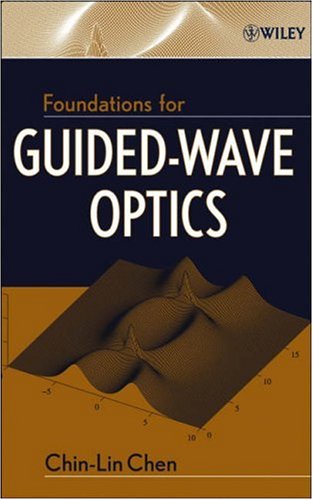
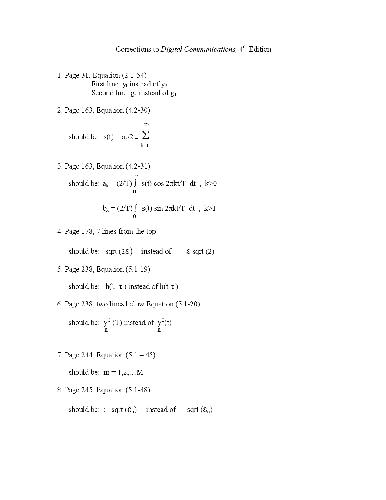
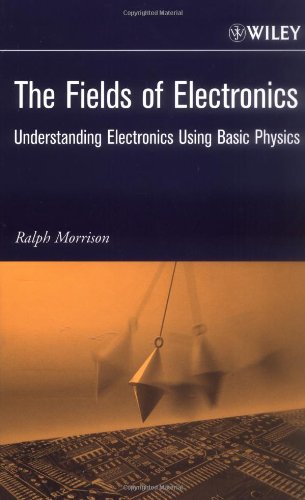
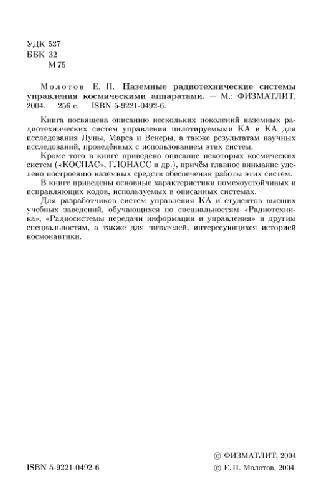
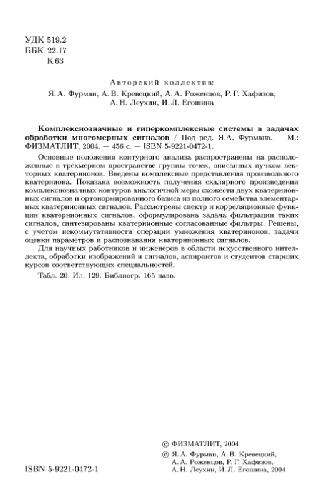


Reviews
There are no reviews yet.